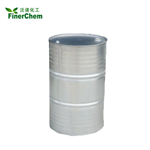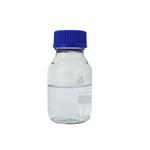What is Acetonitrile?
Oct 14,2021
Acetonitrile is a liquid with an etherlike odor. It is a highly polar, volatile solvent used in many different industrial applications. It is widely used in the pharmaceutical, photographic, chemical, and analytical industries. It is useful as an industrial solvent for the separation of olefins, polymers, spinning fibers, and plastics. Other uses include the extraction and refining of copper and by-product ammonium sulfate; used for dyeing textiles and in coating compositions; used as a stabilizer for chlorinated solvents; manufacture of perfumes and cosmetics; and as a general reagent in a wide variety of chemical processes.

Uses
Acetonitrile is used in the chemical industry as an intermediary in the synthesis of several chemicals and products such as acetophene, thiamine, acetamidine, alpha-naphthaleneacetic acid, nitrogen-containing compounds, acrylic fibers, nitrile rubber, pesticides, pharmaceuticals, perfumes, and lithium batteries. It is also used as a polar solvent for both organic and inorganic compounds and in nonaqueous titrations.
Mechanism of Toxicity
If released to ambient air, acetonitrile will remain in the vapor phase where it will be degraded through reaction with photochemically produced hydroxyl radicals. The half-life of acetonitrile in ambient air has been estimated to be about 620 days. If released to soil, acetonitrile is expected to volatilize rapidly. Biodegradation in soil is not expected to be a major degradation pathway. If released to water, acetonitrile is not likely to adsorb to soil and sediment particles. Acetonitrile is expected to be removed from water bodies through volatilization, as the chemical hydrolysis and bioaccumulation potential for this chemical are low.
Environmental Fate
Acetonitrile is slowly metabolized by cytochrome P450 in the liver to produce hydrogen cyanide. Toxicity is produced by the combined effect of circulating acetonitrile and cyanide. Cyanide exerts its toxicological effects by disrupting oxygen utilization at the cellular level. The disruption results in decreased oxygen utilization by body tissues and lactic acidosis.
- Related articles
- Related Qustion
- Is acetonitrile a highly polar solvent? Dec 27, 2023
Acetonitrile is a highly polar, volatile organic compound used as a solvent in many industrial applications.
- Effect of Additives on Acetonitrile Polarity Dec 21, 2023
Acetonitrile is a relatively nontoxic, highly volatile and aprotic polar organic solvent, some additives can affect its polarity, such as CO2 and imidazolium ionic liquids.
- Acetonitrile- The Simplest Organic Nitrile Nov 18, 2019
Acetonitrile is a nitrile that is hydrogen cyanide in which the hydrogen has been replaced by a methyl group. It is the simplest organic nitrile (hydrogen cyanide is a simpler nitrile, but the cyanide anion is not classed as organic).
Otto Fuel II (OFII) was developed by Dr Otto Reitlinger and introduced by the United States Navy in the mid-1960s as a monopropellant, a propellant consisting of a chemical or mixture.....
Oct 14,2021Chemical ReagentsBetulin was first observed by Lowitz in 1788, from the sublimation products of birch bark. Betulinic acid (3β, hydroxyl-lup-20(29)-en-28-oic acid) (BA) is a triterpenoid of lupane-structured pentacyclic triterpene.....
Oct 15,2021Natural ProductsAcetonitrile
75-05-8You may like
- The toxicity of Triethylene glycol
May 14, 2024
- Is 1,4-benzoquinone a toxicity compound?
May 11, 2024
- The Synthesis method and Toxicity of 18-Crown-6
May 10, 2024
- Acetonitrile
-

- $0.00 / 150Kg/Drum
- 2024-05-21
- CAS:75-05-8
- Min. Order: 1KG
- Purity: 99.9%
- Supply Ability: 5000mt
- Methyl Cyanide
-

- $1500.00 / 1T
- 2024-05-06
- CAS:
- Min. Order: 1T
- Purity: 98%
- Supply Ability: 20T
- Cyclohexane
-

- $16.00 / 1kg
- 2024-05-06
- CAS:75-05-8
- Min. Order: 1kg
- Purity: 98%
- Supply Ability: 20T




